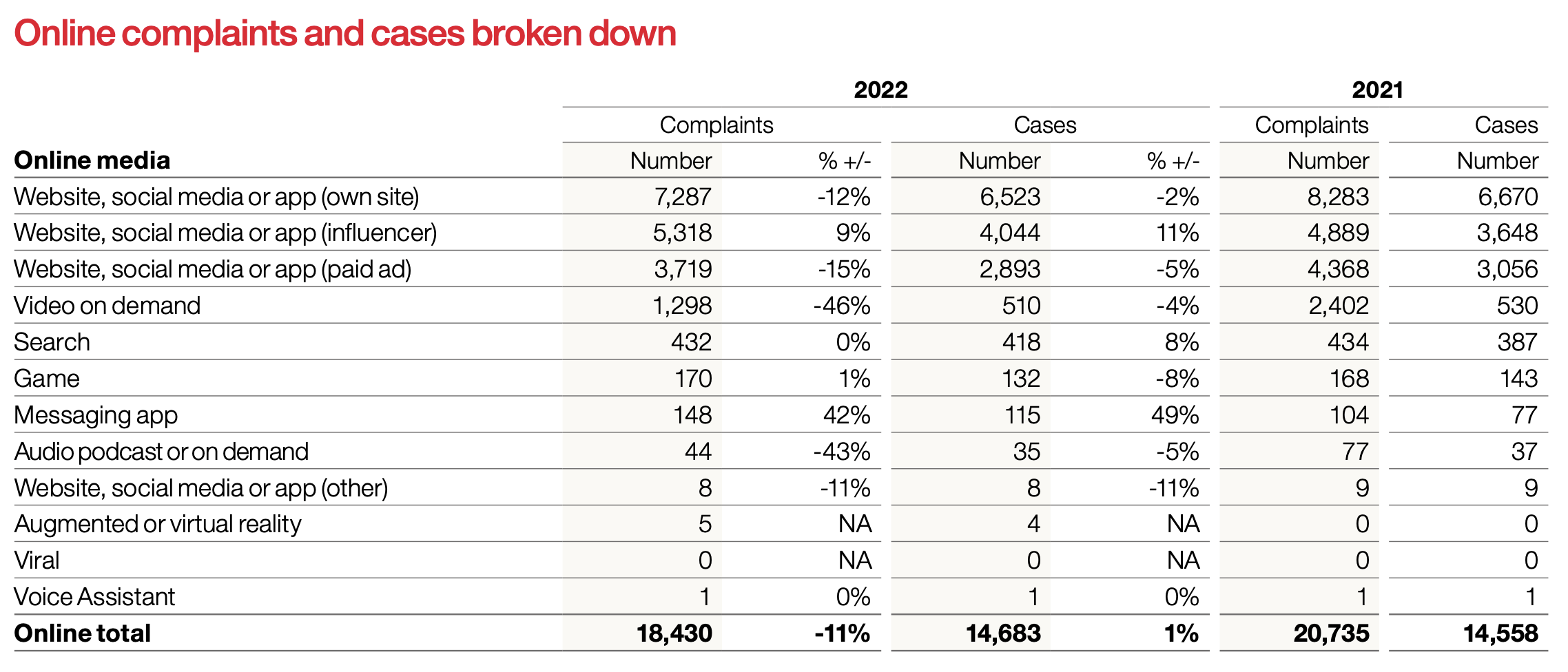One of the many reasons we pay close attention to the advertising regulators around the world is they are a great indicator for the Influencer Marketing sector’s growth health.
In particular we follow the UK”s Advertising Standards Authority. Not just because of our location. The ASA gives us a digestible sample of what’s happening in consumerland (population; not-as-big-as-the-USA) when our collective marketing and comms efforts collide with ears, eyes, minds and wallets.
Think of regulators as the Customer Services department for everyone operating in this space. Sure, they have to wear an enforcement hat in extreme instances when bad actors break the rules, but generally, the day-to-day is listening to ‘customer’ problems without us having to stretch this simile too far.
“Regulator’s annual report are a bell-weather of the state of influencer marketing’s progress” says James Beaven, CEO of RippleXn.
So, when the ASA produces its annual report it’s worth treating the content as a datapoint when looking more broadly at industry trends. From a very general perspective, we can see TV, Radio and Print complaints are down while non-broadcast complaints, particularly in social media, are up - which is to be expected for obvious reasons. When you compare the report substance with the individual rulings, you can look at the data through an Influencer Marketing lens.

For some time we’ve been looking at those rulings and wondering why there are disproportionately more complaints originating from text posts than video? We recently had the opportunity to talk to a leading data scientist about what people complain about, and in particular, the nuances of post-type by platform.
Here’s our problem: Having analysed over 50,000 hours of video content so far, which is a miniscule snapshot of the amount of #AD content uploaded or streamed every day, we have a better idea than most about how exposed brands are to action being taken against them, particularly around the advertising of age-restricted products to children, but we couldn’t figure out why less parental outrage was levelled against social videos compared to text-based posts.
Our eureka moment hit after speaking with this brilliant data scientist about ‘how’ audiences are likely to complain.
Videos are experiential and linear. In other words, offending content buried at 9 minutes 28 of a VOD, or at midnight local time on a livestream, is less likely to be co-watched by a parent or guardian, compared to a 15-second scan of a shared/followed text post. Hence videos get proportionally less complaints from the public.
“Complaints seems to correspond to the viewing format”
Why is short-form so different to long-form video?
The sharing aspect is interesting as well. Surely with so much video being shared we would see more complaints? Well, no. Short-form or a video clipped to a particular moment in time takes video shared completely out of context. For example, imagine a short clip of one person punching another. What may have been an entirely defensive reaction, in that clip you only see one person’s shocking violent aggression against another, and it can be viewed over and over, shared and re-shared. You wouldn’t read and re-read the same text post, “One person punches another,” over and over and over.
Audiences are less likely to complain about a shared clip, because they understand it may not be in context, and frankly who has the time to investigate the entirety of the source material for every shocking video that lands in our feeds?
Coming back to report predictions, what we see are the mechanisms and levers being put in place to support the growth in Influencer Marketing. James Best, CAP chair, commented that delayed legislation and reviews focused on the advertising sector are, “... likely to be rushed through in 2023,” so brands and their agencies are going to see a lot of changes in their working practices in a relatively short period of time.
Time is prohibitive!
One final observation from the report is the cost of investigations is creeping up. That’s one to watch! In the old world, an investigation didn’t involve watching 1000s of hours of video. If only there was some kind of technology that could… Hmm.

